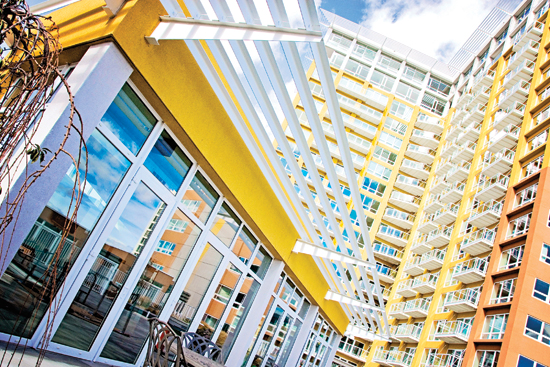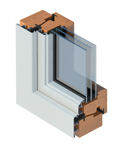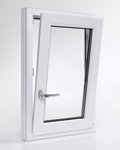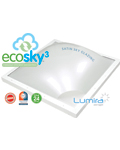Fenestration Solutions for Efficiency and Performance
Learning Objectives:
- Explain the multiple, interrelated ways in which fenestration products affect building performance and energy efficiency.
- Discuss current energy codes and how fenestration variables relate to specific prescriptive and performance-based design criteria.
- Describe specific fenestration solutions and how they can be used to improve building performance, including aerogel glazing and tilt-turn window systems.
- List related building performance objectives considered for energy-efficient fenestration systems that address occupant comfort and need.
Credits:
Global trends in architectural design these days seem focused on getting more transparency per square foot, throwing many of the reasons not to fenestrate out the proverbial window. This is after a few years of pulling back the reins on transparency, due to such varied concerns as energy costs, facility security, sound transmission, and glare from the sun. Yet the window-to-wall ratio, or WWR, is no longer a solitary fixation for architects and their clients. More attention today is given to enclosure U-value (also given as U-factor), the overall heat-transfer coefficient measured in BTUs per square foot of a given building assembly per degree temperature difference.
Part of the swing toward more open envelopes is end-user demand. For example, in a recent article on apartment building design by editor Penelope Green in The New York Times, a real estate broker says, “Now what most people wanted in their living rooms, they want in their bathrooms. They'll say, 'What? No view?'” Apparently it's just as fun to be seen as it is to see out, whether the spaces are sacred or profane. Newly renovated historic landmarks such as Walker Tower by the firm CetraRuddy exemplify the trend, reports Green, alongside innovative new high-rises such as 215 Chrystie Street by Herzog & De Meuron, a concrete-and-glass composition with interiors by architect John Pawson.
All this exhibitionism might come at a real cost if it weren't for a raft of new fenestration products that improve the feasibility of expanding glazed areas, whether on the roof or even on south-facing facades like Walker Tower's primary exposure. “As compared to a new roof with its R-value of about 30, a conventional skylight or window comes with an insulating value of R-1 or less,” says Mike Reeves, an executive with Wasco Skylights. “Yet, new glazing technologies such as electronically tintable glass and polycarbonate panels filled with aerogels help improve privacy, diffuse sunlight, and reduce infrared, yielding values of about R-6,” he adds. Many architects look for windows and skylights boasting a target value close to R-5 or better, which improves upon typical products bearing the U.S. Department of Energy's ENERGY STAR label.

Photo courtesy of REHAU North America
Architecture firm Antunovich Associates reimagined the faded casino hotel, the 23-story former Golden Phoenix in Reno, Nevada, as a mixed-use residential community with floor-to-ceiling windows with unplasticized polyvinyl chloride (uPVC) tilt-turn frames.
Notice

www.dowcorning.com/construction

www.menckwindows.com

www.na.rehau.com/4500

www.wascoskylights.com/ecosky3










